Tacoma, WA Pollen and Allergy Report for Summer 2023
Pollen Allergy Trends in Tacoma, WA
When is pollen lowest in Tacoma, WA?

February
Lowest month total PPM
Avg. PPM
When is pollen highest in Tacoma, WA?

May
Highest month total PPM
Avg. PPM
How does pollen in Tacoma, WA compare to Washington?
Tacoma has a lower average PPM than the state of Washington.
Tacoma yearly avg PPM:
Washington yearly avg PPM:
How does pollen in Tacoma, WA compare to the USA?
Tacoma has a lower average PPM than the USA.
Tacoma yearly avg PPM:
USA yearly avg PPM:
Is pollen worse this year in Tacoma, WA?
Spring 2023 was worse than spring 2022.
Spring 2023 PPM:
Spring 2022 PPM:
Average PPM in Tacoma, WA
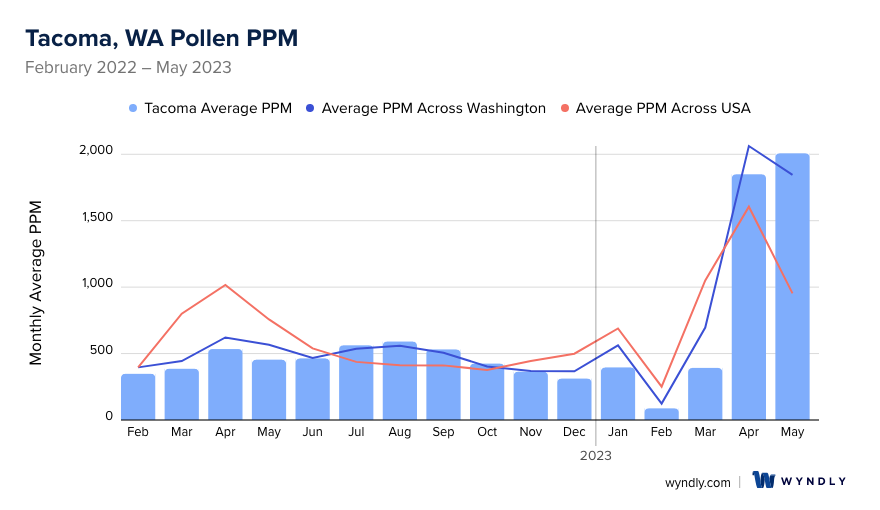
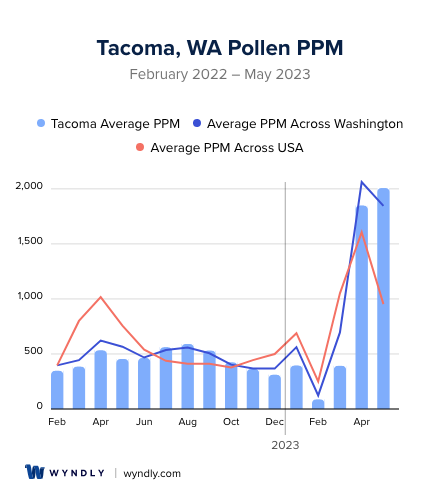
Tacoma, WA Pollen and Allergy Breakdown by Month
Grass
When is grass pollen highest in Tacoma, WA?
March has the highest grass pollen in Tacoma, WA with an average PPM of
When is grass pollen lowest in Tacoma, WA?
November has the lowest grass pollen in Tacoma, WA with an average PPM of
Tree
When is tree pollen highest in Tacoma, WA?
May has the highest tree pollen in Tacoma, WA with an average PPM of
When is tree pollen lowest in Tacoma, WA?
April has the lowest tree pollen in Tacoma, WA with an average PPM of
Weed
When is weed pollen highest in Tacoma, WA?
August has the highest weed pollen in Tacoma, WA with an average PPM of
When is weed pollen lowest in Tacoma, WA?
February has the lowest weed pollen in Tacoma, WA with an average PPM of
Tacoma, WA Pollen Monthly Breakdown by Pollen Type
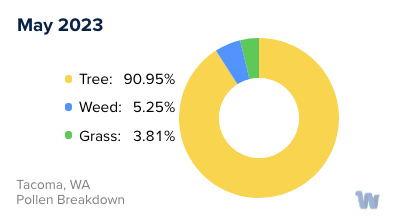
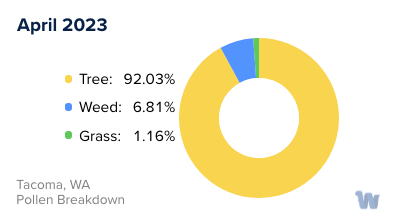
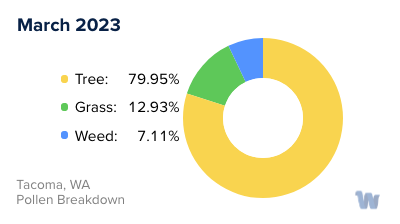
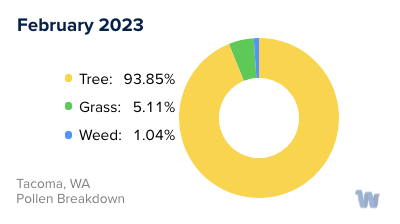
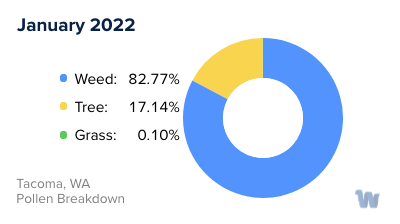
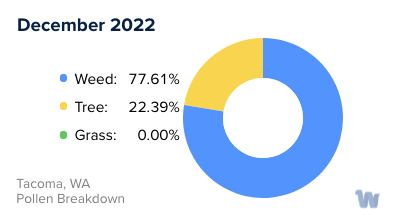
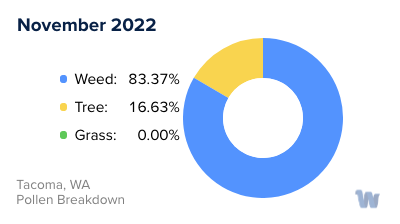
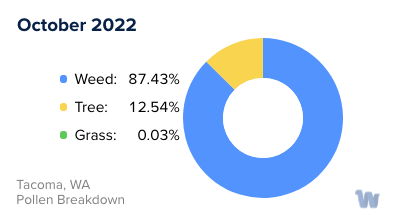
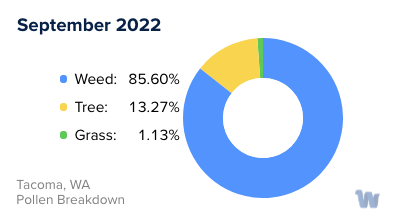
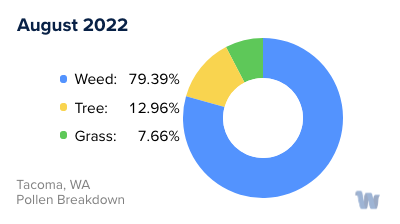
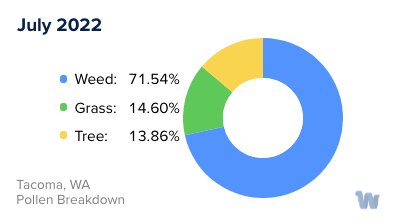
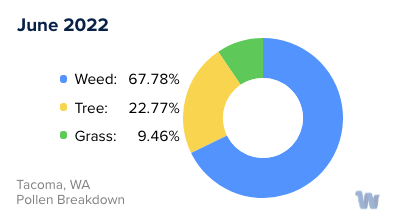
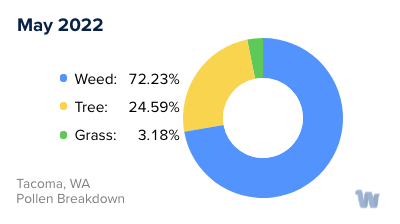
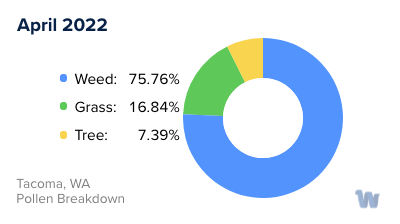
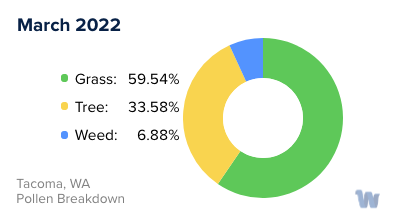
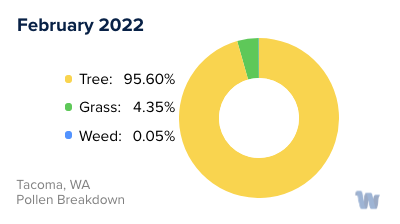
Pollen and Hay Fever in Tacoma, WA
In the picturesque city of Tacoma, Washington, residents enjoy the beauty of nature as it changes through the seasons. However, with this natural beauty comes the less enchanting side of seasonal pollen allergies, commonly known as hay fever. During spring and summer, trees, grasses, and weeds release tiny grains of pollen into the air. These minuscule particles can cause an array of symptoms, such as sneezing, itchy eyes, and a runny nose, that often make outdoor activities less enjoyable for allergy sufferers.
In Tacoma, tree pollen is particularly prevalent in the spring. Alder, cedar, and pine trees are common culprits. Their pollen counts can be especially high during March and April. As spring transitions into summer, grass pollen takes center stage. Residents may notice that lawns and fields throughout the city become lush and verdant. This is when grasses such as ryegrass and Kentucky bluegrass release their pollen, usually peaking in late May and June.
As summer wanes and gives way to fall, weed pollen emerges as the primary allergen. Ragweed is a notorious offender, as it can release a staggering amount of pollen into the air. In Tacoma, this typically occurs in late August and September.
Though the air is crisper and the leaves are falling, the pollen count doesn’t drop to zero in the autumn. Molds, which are not pollens but can cause similar allergic reactions, are more common during this time. Fallen leaves provide the perfect breeding ground for molds.
It's important for residents of Tacoma to be aware of these pollen seasons, as understanding the sources of these allergens can help in managing daily activities and maintaining a good quality of life amidst the stunning scenery that Tacoma has to offer.

